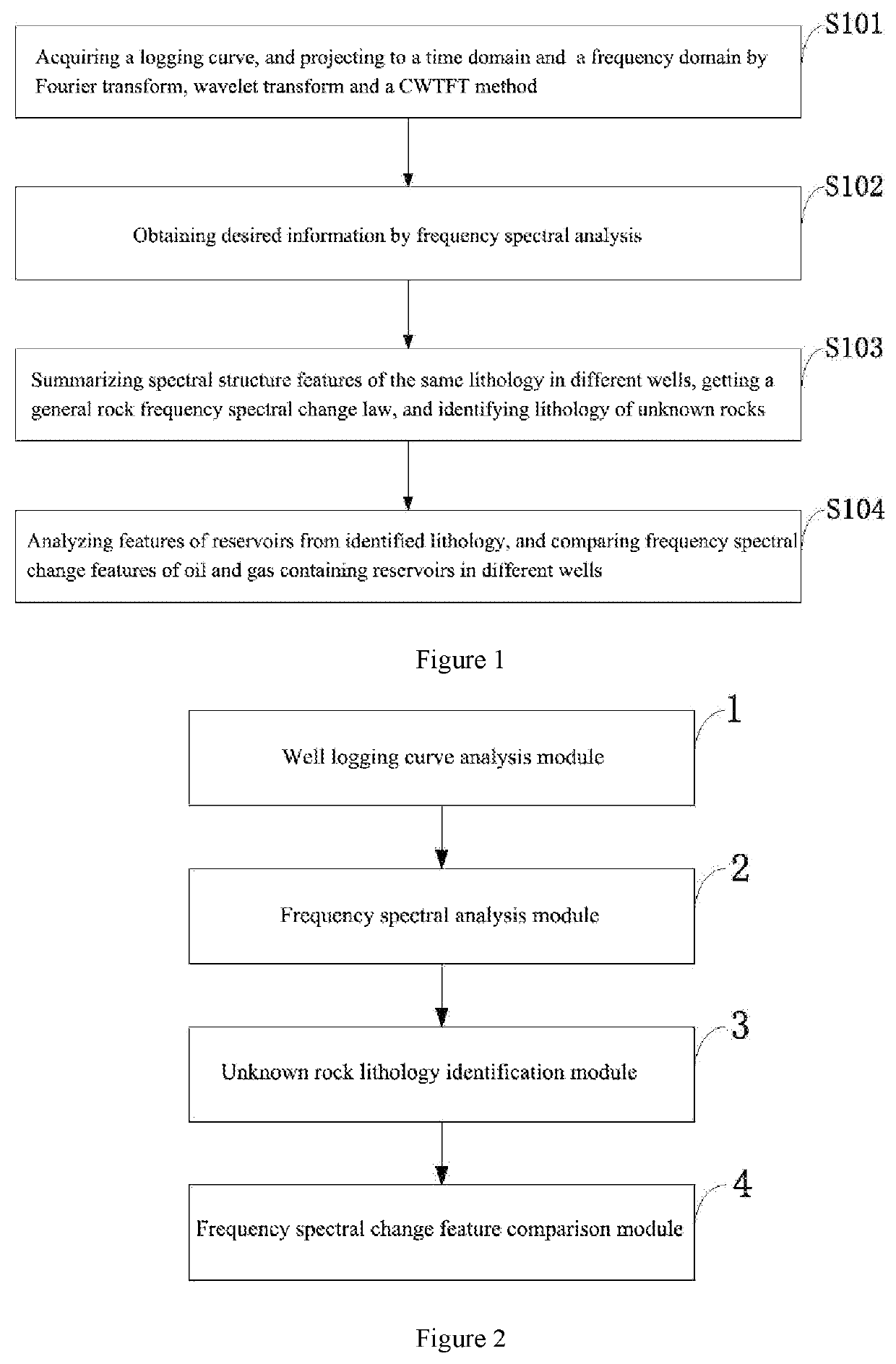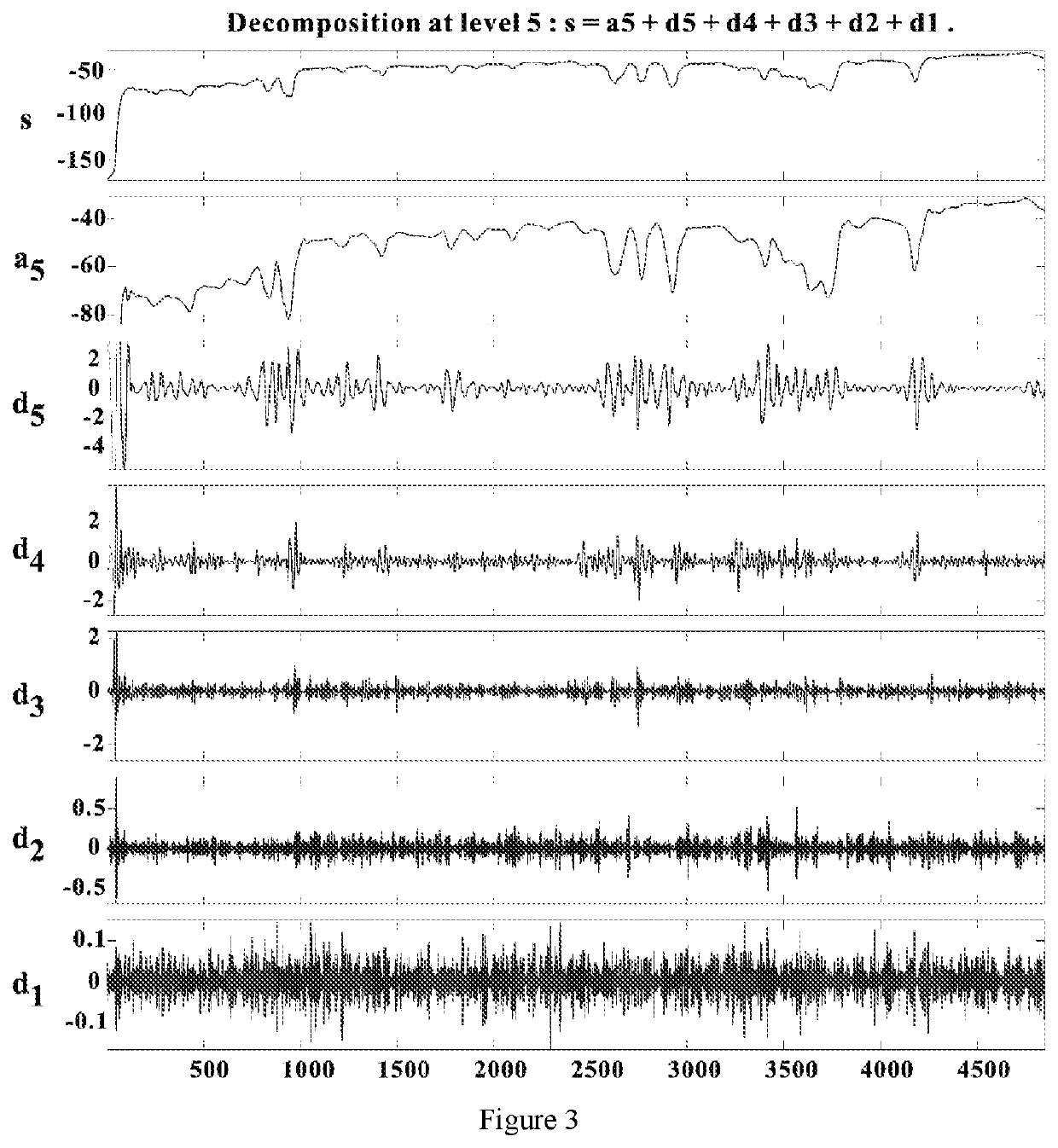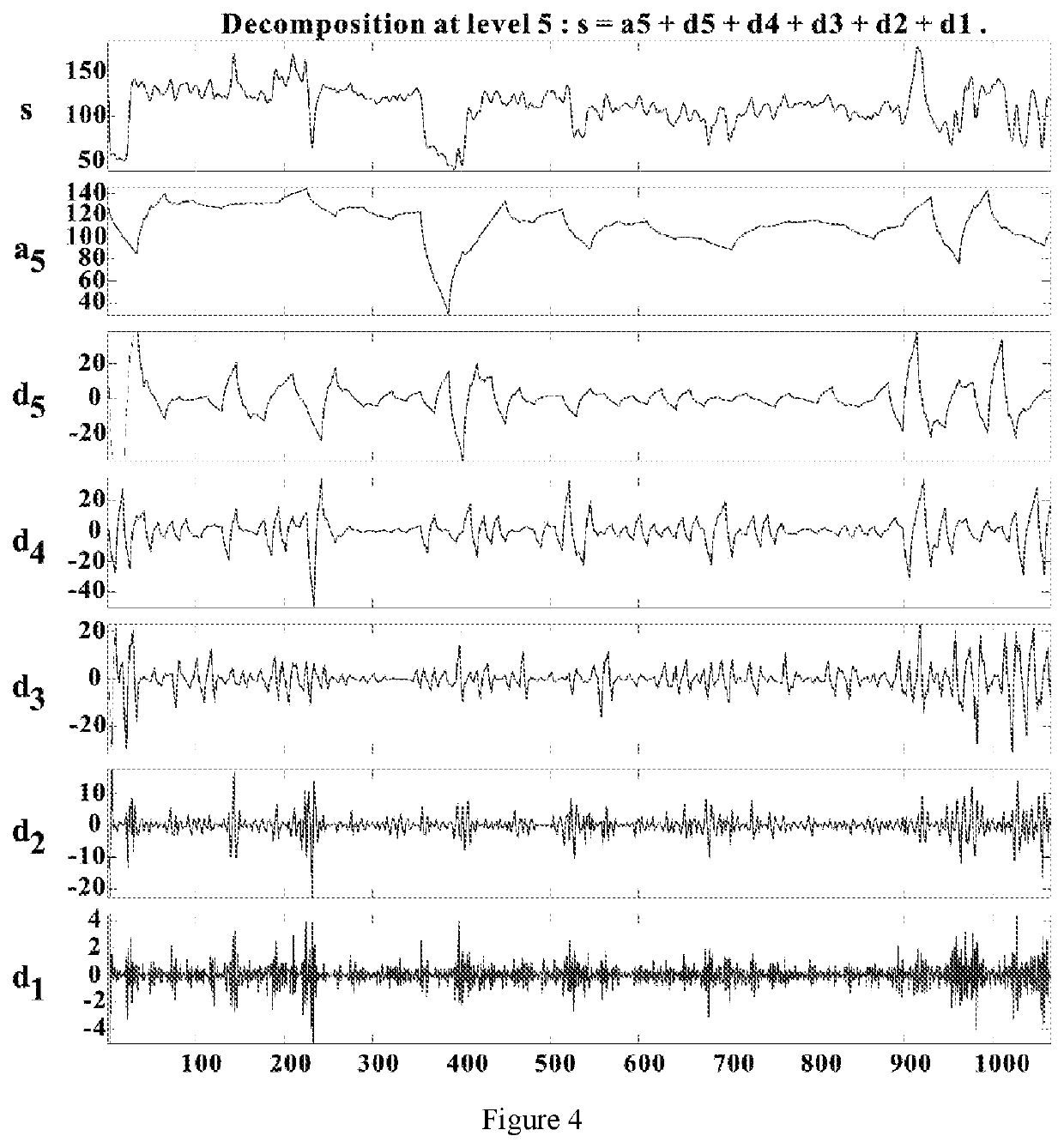Analysis method, system and storage media of lithological and oil and gas containing properties of reservoirs
a technology of lithological and oil and gas containing properties and analysis methods, applied in seismology for waterlogging, borehole/well accessories, instruments, etc., can solve problems such as insufficient accuracy and low resolution, inability to obtain high-frequency analysis results, and inaccuracy of analysis
- Summary
- Abstract
- Description
- Claims
- Application Information
AI Technical Summary
Benefits of technology
Problems solved by technology
Method used
Image
Examples
Embodiment Construction
[0038]To show purposes, technical solutions and advantages of the present invention more clearly, hereinafter a detailed description will be given to embodiments of the present invention. It shall be understood that embodiments described here are only used to explain technical solutions of the present invention without limiting implementation of the present invention.
[0039]To address problems existing in the prior art, an embodiment of the present invention provides an analysis method, a system, a storage medium and a computer device of lithology and oil and gas containing properties of reservoirs and hereinafter a detailed description will be given to embodiments of the present invention together with the appended drawings.
[0040]As shown in FIG. 1, an analysis method of lithology and oil and gas containing properties of reservoirs, comprising following steps:
S101: acquiring a logging curve, and projecting the logging curve on a time domain and a frequency domain by Fourier transfor...
PUM
 Login to View More
Login to View More Abstract
Description
Claims
Application Information
 Login to View More
Login to View More - R&D
- Intellectual Property
- Life Sciences
- Materials
- Tech Scout
- Unparalleled Data Quality
- Higher Quality Content
- 60% Fewer Hallucinations
Browse by: Latest US Patents, China's latest patents, Technical Efficacy Thesaurus, Application Domain, Technology Topic, Popular Technical Reports.
© 2025 PatSnap. All rights reserved.Legal|Privacy policy|Modern Slavery Act Transparency Statement|Sitemap|About US| Contact US: help@patsnap.com



